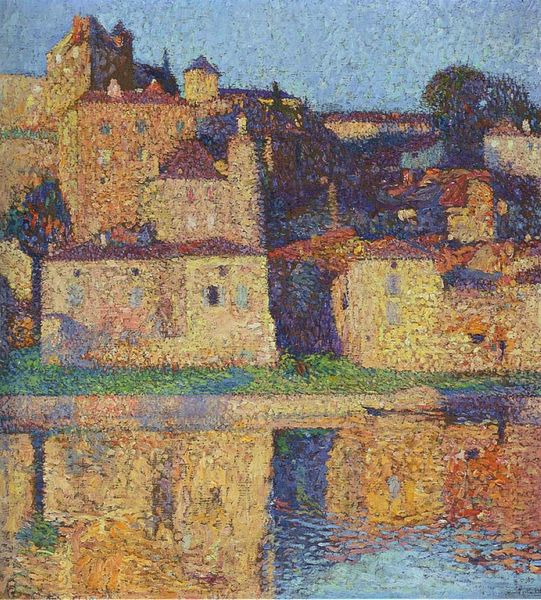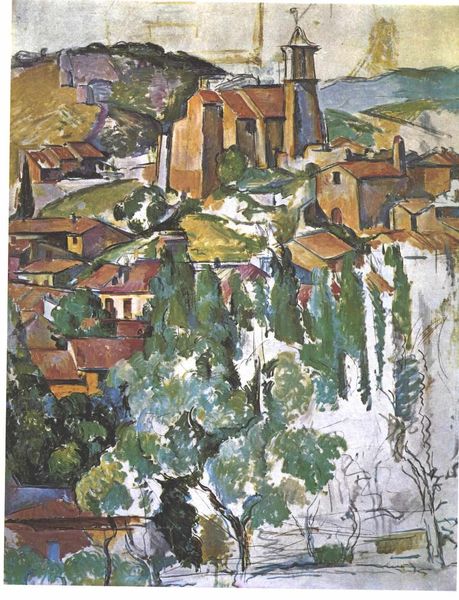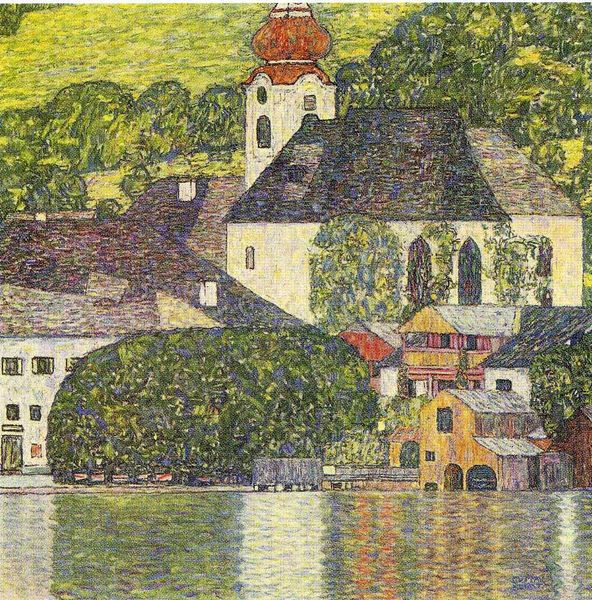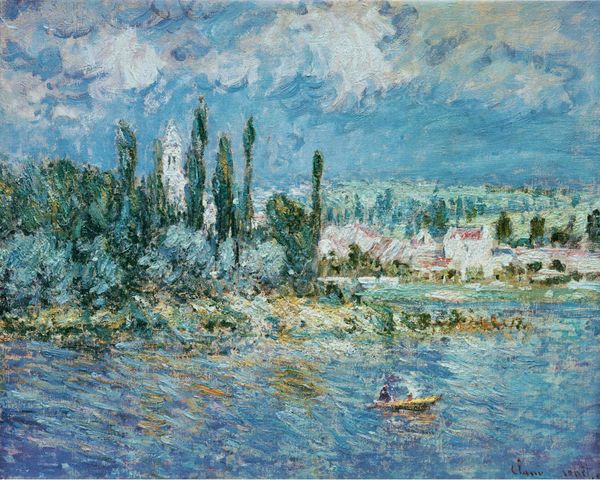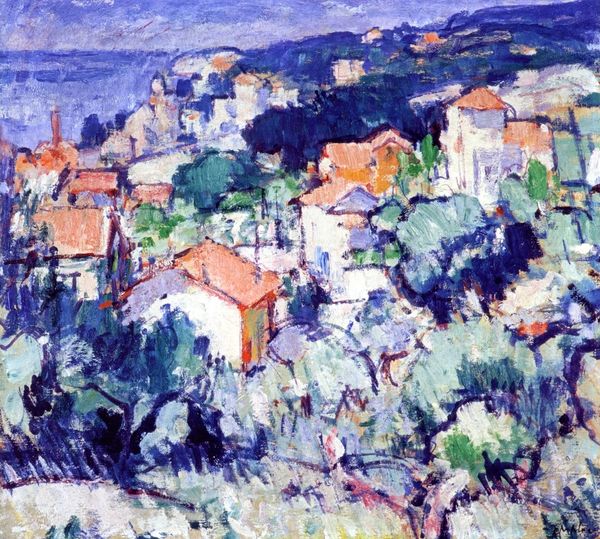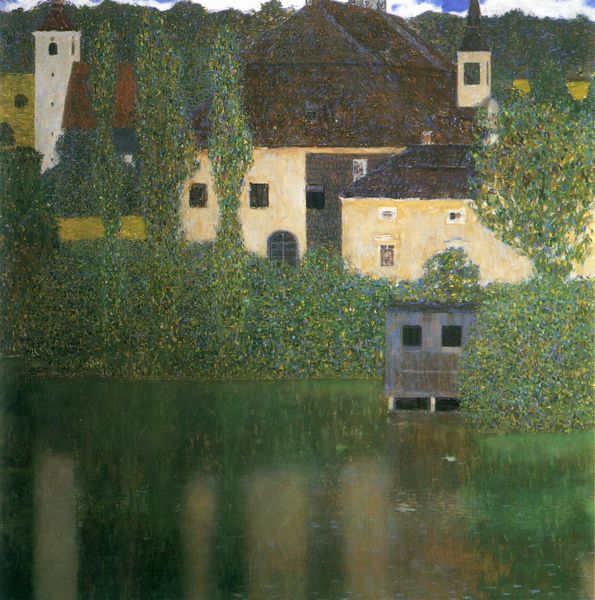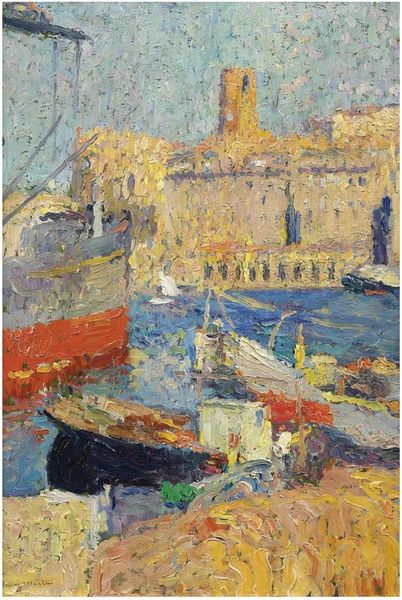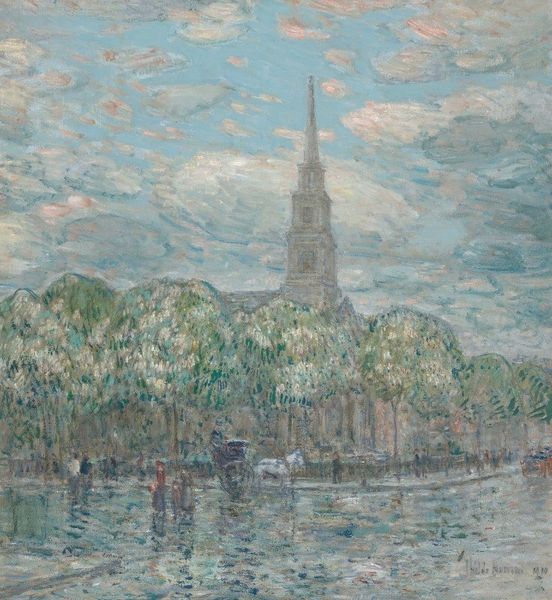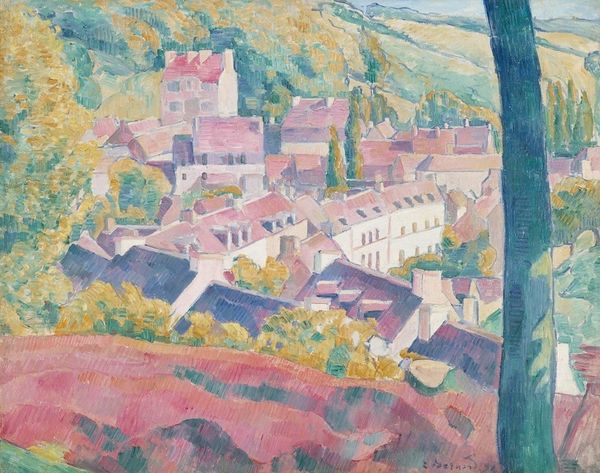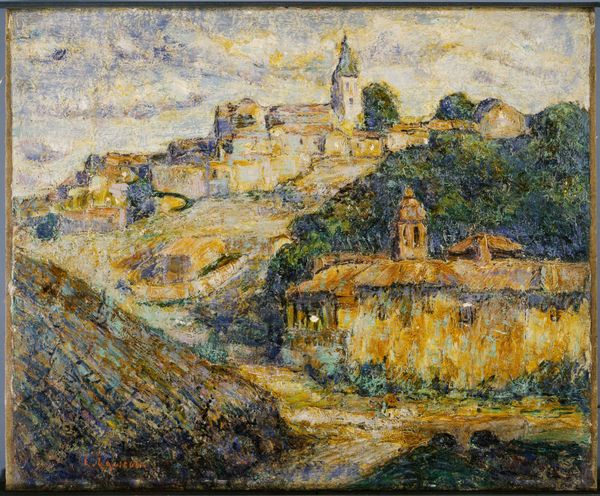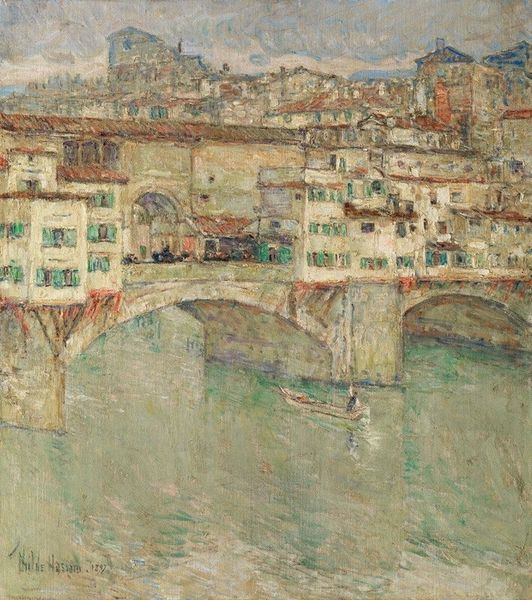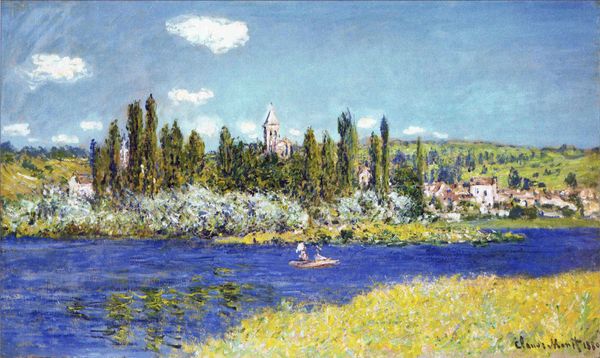
painting, oil-paint
#
vienna-secession
#
painting
#
oil-paint
#
landscape
#
oil painting
#
geometric
#
symbolism
#
cityscape
#
modernism
Copyright: Public domain
Curator: Standing before us is Gustav Klimt's "Church in Cassone," painted in 1913. It’s an oil painting showing the small Italian town, built on the edge of Lake Garda. Editor: It has such a strange, calm feeling, almost hypnotically still. Everything seems built from tiny squares, like shimmering tiles. And those trees like dark sentinels dividing everything! Curator: Klimt visited Cassone, in Italy, and became obsessed with capturing its distinctive light. What's particularly interesting here is his almost geometric treatment of form, especially how the buildings seem to stack and layer upon one another. Editor: It's funny, the geometry somehow softens the rigidness you'd expect. Look at the water at the bottom—little flicks of color almost dance, as if the paint itself has a current! It's quite different from his figurative work. What do you think makes him break from the people to paint structures? Curator: Klimt, in his landscape painting, it is suggested, seems to explore the surface's aesthetic, maybe finding refuge away from the world he otherwise depicts in portraits and allegories. Landscapes offered an opportunity to embrace form and color, as he could observe them in the physical world, while still giving it a heavy tint of symbolism. This offered, by virtue of existing separate to the canvas itself, an additional element that the other subjects maybe were missing. It reflects, perhaps, that modern shift from rural idealism to city realism that happened during the era. Editor: I get that! It’s as if he saw the town not just as a place, but as a breathing, organized geometry and rhythm. The high vantage point abstracts everything, flattening it all in ways that make me wonder if we’re seeing a literal space, or Klimt's own, internal mapping of place. I almost hear music listening to this piece. Does that make sense? Curator: Yes, actually. The way he repeats shapes and textures, the rhythmic verticals of those dark trees, definitely creates a visual echo, or harmony. This landscape demonstrates what some consider an aesthetic utopia, captured in one canvas! What do you think is the broader implication of his painting here, or elsewhere? Editor: To be in the world, to find a feeling—like an echo—of meaning. To paint it in all its organized, joyful chaos! It is also a bit like looking back in time to simpler views on what a space or city, community really, is. Curator: Indeed, his vision offers a poignant contrast to the frenetic energy of modern life, an ode to finding harmony within form. Editor: Precisely. A world constructed of art, where we each can exist, however imperfect, square by square.
Comments
No comments
Be the first to comment and join the conversation on the ultimate creative platform.
